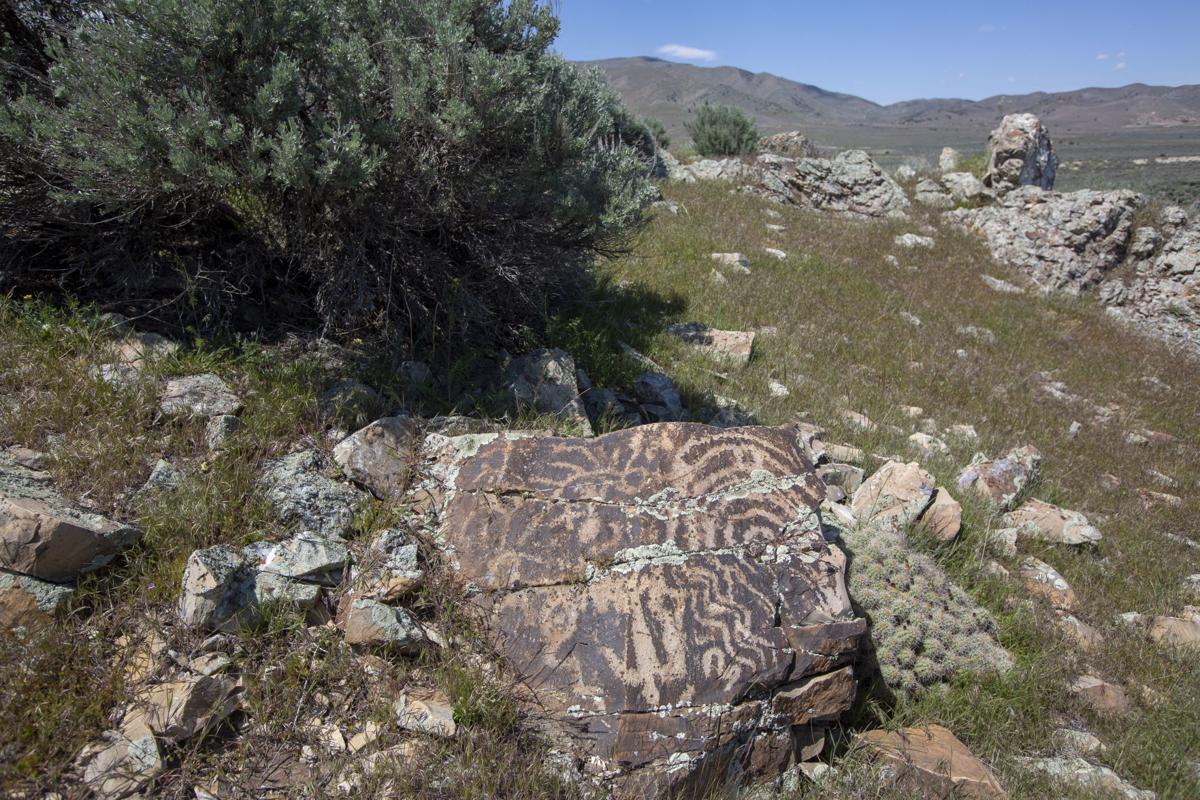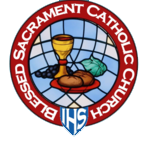Catholic school club helps document petroglyphs on the west side of Utah Lake

A petroglyph is seen Friday May 3, 2019, at the Smith Family Archaeological Preserve on the eastern shores of Utah Lake. Elementary school students are doing volunteer work to protect and preserve the petroglyphs. (Photo by Natalie Behring, special to the Daily Herald.)
About 20 school kids were hiking back to their cars, red-faced and sweaty, following a day of documenting Native American petroglyphs.
The self-proclaimed shovel bums — slang for an entry-level archaeologist — had spent their day doing actual archaeology work, thanks to a fifth grade teacher at their school, John McHugh.
McHugh had worked as an archaeologist for four years, and when he returned to teaching, wanted to start an archaeology club to share his passion with the kids. When he started teaching at Blessed Sacrament Catholic School in Sandy, he was finally able to make that dream a reality.
“Initially I just wanted to have a little club and share my passion for Native American culture,” McHugh said with a laugh. “It ended up snowballing into the biggest club in the school with 26 kids. They really love it.”
The goal of the club is simple — to pass on a love of archaeology to the kids, who range from fifth to eighth grade.
The club was able to partner with the Smith Family Archaeological Preserve, a 200-acre historical preserve on the west side of Utah Lake, to get some hands-on archaeology experience.
The preserve started in 2014, when land was donated to preserve the rock art, said site steward Randy Griffith. One of the goals of the preserve has been to get listed on the National Register of Historic Places, and has partnered with the Utah Division of State History to make that happen. Even though the petroglyphs throughout the preserve had been surveyed and photographed, each one still had to have a site survey form completed.
“With 240 panels, that’s a lot of work,” Griffin said.
Filling out those site surveys is the work the kids ended up doing in a trip earlier this spring, as well as Friday.
“The thing that’s amazing is they’re doing real archaeology,” McHugh said. “They’re doing what (an archaeologist) would have his underlings do.”
The kids had the chance to sketch the petroglyphs, and document information such as what bedrock the etchings were located on, as well as documenting latitude and longitude so that the pieces could easily be found using a GPS system, said Isabella Pickers and sixth grader Alison Green, two of the students on the club trip Friday.
Both of the girls have been in the club for a couple of years now, and have participated in other trips that included excavating in Nine Mile Canyon. After the field trips, the class discusses the history and meaning of the panels.
As for McHugh’s goal of instilling a love of archaeology in his students, it seems to be working. Even after a hard, hot day of work, both Pickers and Green said they want to continue with archaeological work.
“Why stop now?” Pickers said. “Why not just keep going and going and going?”

